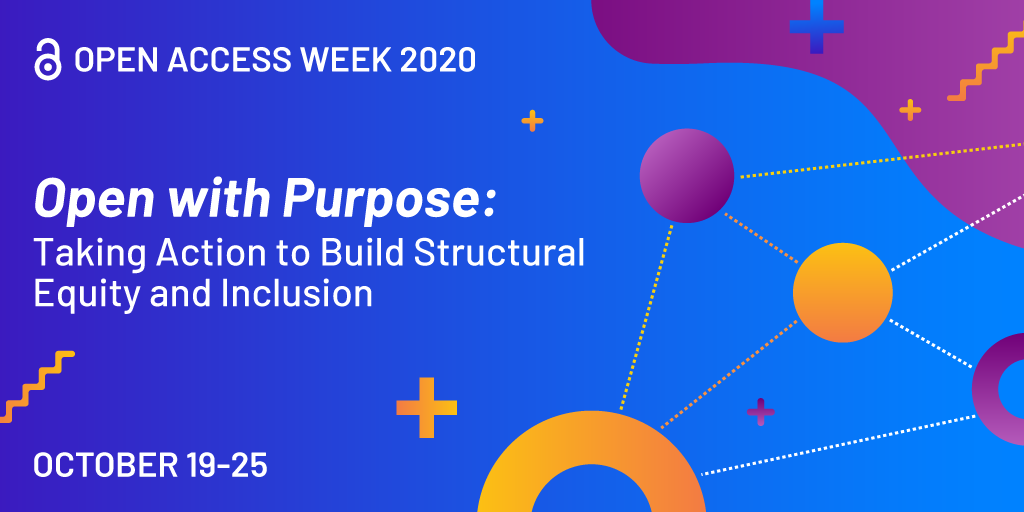
October 22, 2020, by Emma
Open Access Week: Full open access – a change of scenery
In our fifth and final blog for Open Access Week, Natalia Tsiva, Research Library Advisor, provides an overview of full open access publishing, outlines what fully open access journals and platforms are, what are their advantages for authors and the public and how Plan S is going to change this publishing model from 1 January 2021.
On 4 September 2018, 11 national research funding organisations, with the support of the European Commission and the European Research Council (ERC), announced the launch of Plan S, an initiative to make full and immediate open access (OA) to research publications a reality.
Making research available on fully open access journals and platforms is one of the ten principles of Plan S but is also perhaps the most straightforward and effective way to achieve this reality.
What are fully open access journals?
Fully open access journals make the final version of articles immediately free to read and reuse without any subscription charges or access fees to readers, usually under a Creative Commons Licence. Most permission barriers are removed, and copyright for the article is retained by the authors.
Some fully OA journals generate revenue by charging publication fees, these fees are called article processing charges (APC). For more information about fully OA journals, please visit DOAJ (Directory of Open Access Journals).
What are open access platforms?
Open access platforms, such as EU Horizon F1000, Bill and Melinda Gates and Wellcome platform, are platforms on which authors can publish their research free of charge. They offer an open and transparent peer-review process and a rapid publication process.
Authors can publish their work at any stage of their research, either during their project or after it has ended.
What are the perks of full open access publishing?
There are a number of benefits for researchers and the wider community when original research outputs are published in fully OA journals and platforms.
For researchers:
- Increases readers’ ability to find and use relevant, up to date literature
- Increases the visibility, readership and consequently the impact of authors’ work
- Accelerates the pace of research, discovery and innovation
For the community:
- Provides unrestricted and immediate access to materials
- Democratises access across all people
- Encourages support of scientific enterprise and engagement in citizen science
However, the “pure” route to gold open access can prove quite restrictive and expensive when certain conditions are not met. What is an author supposed to do when the most appropriate publication venue for their article is not fully open access or their research is not funded at all or funded by bodies who do not operate with institutional block grants (i.e. UKRI) which can cover the cost on their behalf?
Plan S promises efficient solutions to these long-lasting problems.
Change of Scenery for full OA publishing
From January 2021, funders should cease supporting the ‘hybrid’ model of publishing. Plan S only allows for some temporary leeway, offering a transitional pathway towards full open access within a clearly defined timeframe, and only as part of transformative arrangements. Publishers must commit to transitioning their subscription journals to OA over the period of the agreed transformative deals.
Most importantly, funders and institutions are obliged to cover open access publication fees, where applicable, on behalf of individual researchers (principle 4).
Funders and publishers are placed under the microscope in order to ensure unbiased future funding decisions and fight back on publishing tactics driven by profit. Funders are expected to “develop robust criteria and requirements for the services that high-quality Open Access journals, Open Access platforms, and Open Access repositories must provide” (principle 2). They are also expected to “value the intrinsic merit of the work and not consider the publication channel, its impact factor (or other journal metrics), or the publisher” during funding decisions (principle 10).
Plan S and individual funders
Some funders, such as Wellcome Trust, have already publicised their new Plan S-aligned open access policies and more are expected to do so by the end of 2020.
The Research Support Team can support you in navigating these policies, visit our website for more information or email us at openaccess@nottingham.ac.uk

No comments yet, fill out a comment to be the first

Leave a Reply